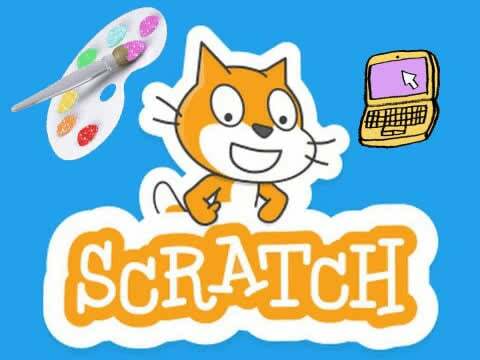Ubiquitous Learning and Instructional Technologies MOOC’s Updates
Scratch
Scratch is a visual programming language created as a project within the Media Lab at MIT. The goal was to improve technological literacy in such a way that programming is accessible to everyone, including the youngest. It is free and available to everyone, and a simple inspection of the gallery of works shows that it is extremely well received. All ages can use this tool to create multimedia content, games or programs. Many educational institutions use the tool as an introduction to the world of programming so that students can easily understand the logic of programming without using languages that are difficult to understand.
The user interface is simple and intuitive. On startup, a short manual will be displayed to explain how the tool works and its elements. It is visually divided into three parts: the scene and additional visual objects, the palette with instructions and the space where the instructions are logically connected (this is actually where all the programming takes place). From the palette with instructions, each individual instruction is drawn to the space where they are logically connected by a simple "drag and drop" principle. Instructions are divided into several categories according to their roles: Movement, Appearance, Sound, Pen, Data, Events, Control, Sensors, Operators and additional instruction blocks where it is possible to create your own instructions or expand existing ones.
Photo reference: https://cdn-learn.adafruit.com/guides/cropped_images/000/002/359/medium640thumb/scratch_cover_update.gif?1547585431
In this video you can see how to use Scratch (instructions are in Croatian language): https://youtu.be/AU1J_8X15V0
Programming involves giving instructions to a computer what to do to solve a problem. Its main purpose is to communicate the algorithm with the machine. In our modern world, programming allows us to interact with computers in a way that was not possible before. It helps us conduct research, design new products and services, manage finances, communicate with others around the world, and much more. Students should develop computer coding skills early to be competitive in today's increasingly digitized world. These transferable skills allow children to learn relevant and competitive abilities while establishing a problem-solving mindset.



This project idea on computer-mediated learning environments is highly relevant and aligns with current trends in education.